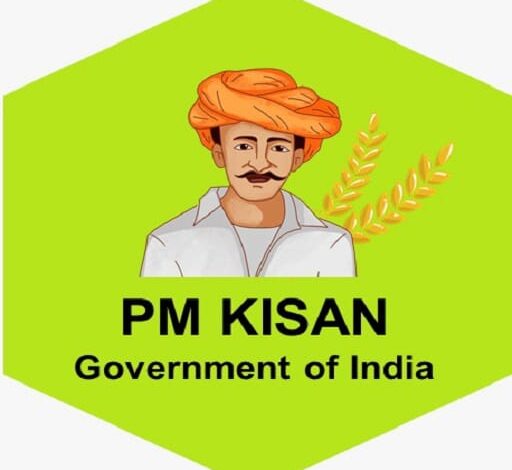
Introduction
India is an agrarian economy where more than half of its population is dependent upon agriculture for livelihood. The government realized a need to support the farmers of this country. Hence, the Pradhan Mantri Kisan Samman Nidhi, or PM-KISAN scheme, was launched in 2019. The scheme provides direct income support to the farmers with a view to increase their financial stability and promote sustainable practices of farming. Ever since, PM-KISAN has remained the heart of India’s agricultural policy. So far, millions of farmers across the country have been reaping the benefits of this policy.
Objectives of PM-KISAN
The main objective behind PM-KISAN is the direct financial assistance to farmers, primarily small and marginal ones. Thereby, direct cash transfer will benefit through directly:
Better Living Standards for Farmers:
This is aimed at improving the living standard of farmers through providing them with some sort of regular financial assistance to make them capable of managing day-to-day activities and purchasing necessary farm inputs to sustain their families.
Better Farming Practices:
Financial security through PM-KISAN promotes better farming practices that are more sustainable and in sync with modern agriculture. They would be more productive and less harmful to the environment.
Boost Rural Economy:
With over 12 crore farmers under this scheme, its positive impact on rural purchasing power generates an indirect ripple effect on the rural economy and small businesses.
Eligibility Criteria
Not all farmers are eligible for PM-KISAN. For availing this scheme, a farmer needs to meet the following criteria:
Small and Marginal Farmers:
This scheme primarily benefits small and marginal farmers with cultivable land up to 2 hectares.
Land Ownership:
The farmer must be owner of the land which he is cultivating. Tenants and sharecroppers are not directly eligible for the benefits.
Exclusions:
Institutional landholders, income tax payers, doctors, engineers, lawyers, retired government employees with pensions above a certain limit, and any one holding certain political positions are not allowed to take advantage of this scheme.
Under PM-KISAN, eligible farmers get a financial benefit of ₹6,000 per year disbursed directly into their bank account in three equal instalments of ₹2,000 each. Usually, these instalments get paid out every four months. So, farmers are assured all-round the year of steady income.
Reduction in leakage:
It employs the delivery mechanism of Direct Benefit Transfer (DBT) that literally avoids middlemen, and thus, the scope for corruption and delay is reduced.
No Registration Fee:
There exists no application fee for the scheme. It can, in this way, reach the poorest farmer. How the Scheme was
Implemented and Coverage?
It is implemented by the Ministry of Agriculture and Farmers’ Welfare in close coordination with state governments. The government has maintained a digital database of farmers. One has to compulsorily get registered for this scheme with Aadhaar as an identification proof. This denies duplicity and ensures that funds are received only by the deserving beneficiary.
It aims to benefit all the states and union territories across the length and breadth of India. This includes Jammu & Kashmir and Ladakh with specific provisions for the farming community in these regions.
Gender Inclusive:
The scheme will benefit men as well as women farmers, upholding gender equity as the program empowers women through their rural agricultural communities.
Digital Efficiency:
Through digital platforms, the scheme is transparent; farmers can check the status of their installments very quickly through the PM-KISAN portal or mobile application.
Impact on Farmers as well as the Agriculture Sector
PM-KISAN has been able to bring a revolution in the lives of farmers and the agricultural sector from its first launch.
Income Support:
The amount of income support to farmers is generated directly and they are able to fulfill their current and day-to-day expenses and utilize part for quality seeds, fertilizers, and other inputs. And due to the above reasons, crop yields improvement, and farm productivity increases.
Debt Debt frequently ensnares small farmers into debt circles as it is mostly taken on for seeds, fertilizers, or sometimes due to emergency needs. PM-KISAN provides an uninterrupted stream of regular financial support reducing dependency on informal loans and saving farmers from getting into debt.
Investment in Agriculture:
Income support demands investment in modern, efficient, and more productive agricultural tools and techniques. Increasing non-monetary stress can enable the farm operator to spend more time improving farming methods- ultimately helping the country’s agricultural output.
Climate Resilience:
The scheme will indirectly sponsor climate-resilient farming by providing financial means for adoption of environment friendly practices like drip irrigation, organic farming, and crop diversification.
While PM-KISAN has received world acclaim for its direct benefit approach, the scheme is not without challenges and criticisms.
This is also a principal objection to the PM-KISAN, in that tenant farmers and sharecroppers have been left out of the scheme. They engage in farming but do not own the land, and thus they are excluded from this scheme, giving it to those purportedly the most vulnerable parts of the farming community.
Delayed Payments:
This has also resulted in delayed collection of payments from farmers to cause problems in some farmers preparing their own budgets or accounting records. Many times, it is due to documentation errors or errors in bank account details.
The annual allowance of ₹6,000 is also quite less compared to the many problems that the overall rising input cost, fluctuation in the market price, and a changing climate have been posing to farmers, which are affecting agriculture. The average agricultural farmer finds this amount low and asks for a rise.
Dependency on Land Records:
The accuracy of the land records would first be considered for determination of eligibility. In the states where the land records are either archaic or are incorrect, many eligible farmers might be left out, and some ineligible would gain the amount.
Future Prospect and Recommendations
Inclusion of Tenant Farmers:
The scheme could contact tenant farmers and sharecroppers in an attempt to make a holistic package for support by it for the farmers. No one would be left behind.
Increased Financial Support:
The economics have always been dynamic with inflation running rampant along with continuous increase in input cost. So, the financial support under the scheme must be periodically increased and maintain the pace with corresponding hikes in input and other economic variables.
Digital Infrastructure
Strengthening Digital Infrastructure The grassroots level of digital infrastructure would be strengthened so that the registration, verification, and payment processes would be smoother. It would further be able to reduce complaints related to delayed payments and incorrect records of holding land.
Publicity Campaigns:
The scheme benefits are largely unknown to the rural sector farmers. The government must undertake mass publicity campaigns in vernacular languages focusing on the necessity for the scheme, and also publicity of enrollment procedures.
Conclusion
PM-KISAN is a giant leap towards meeting the financial problems that India’s farming community is plagued with. In this way, direct income support by the scheme enables farmers to enhance their livelihoods and invest in better farming practices for higher food security for India. However, scope exists for improvement within the directions of inclusiveness, financial sufficiency, and operational efficiency. PM-KISAN is thereby poised to take a more crucial role in determining the course of Indian agriculture and its farmers for sustainable growth.




